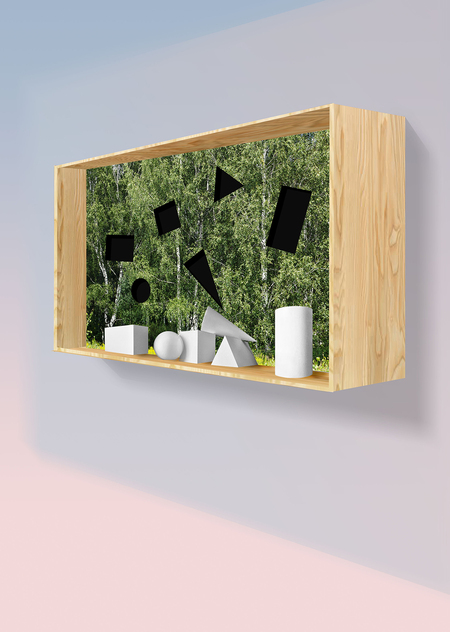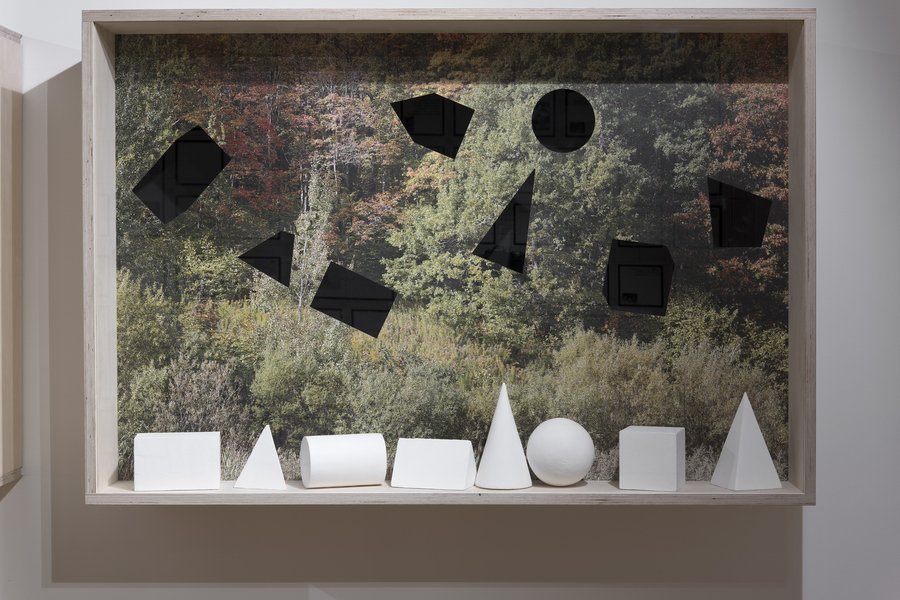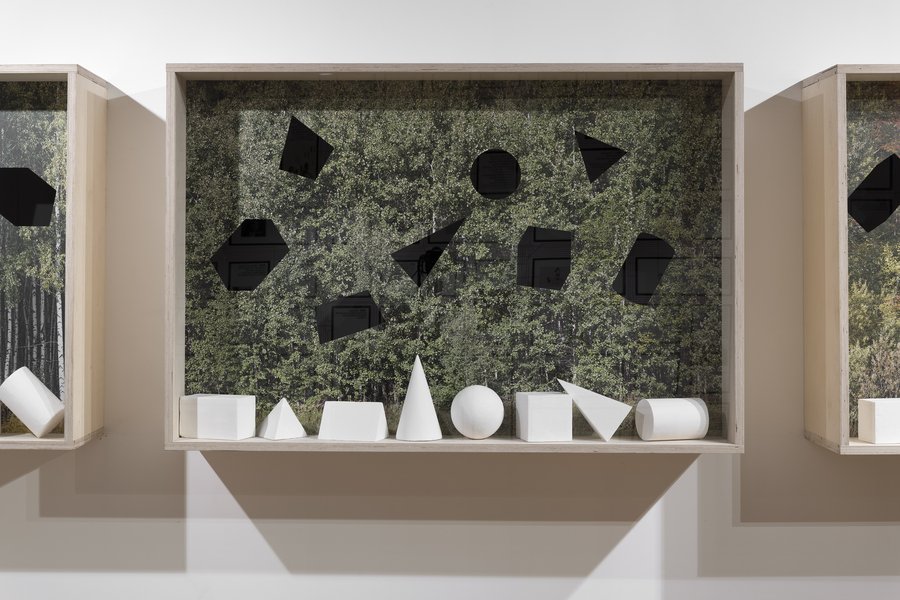
Episodes
The connection between the plane and the space has always seemed to Vladislav Efimov to be important and attractive. Even at the institute, having acquired the skills of a designer, he began to think about the relationship of a technical, strict and concise method of describing the world with the help of a graphic geometry and our evolving, growing freedom in all directions of the space of things and nature. It turned out that synthetic geometry was lacking, and all these lines and circles included in complex designs using drawing tools seemed to be damaged to describe simple reality — they belonged to the world of machine evolution and were therefore accurate, always prepared to be analysed clearly in machine transformations. Geometric forms existed on their own, remaining in divine simplicity and clarity — they were not accessible for direct observation and merely threw their reflections on the plane in the form of orthogonal projections.

The artist wanted, according to him, «a humanly complete description of reality, though unjoyed by accurate measurements; a simple involvement in the freedom of a growing tree of life. The cold marble of synthetic geometry — against the living, albeit temporary, wooden creatures of nature — has so divided the picture of the world.» This sense of separation is bothering Efimov at this time. He may reason, «That’s why I failed to become a full-fledged photographer concerned only with the receipt of art pictures, despite the fact that these images are projections and that one quality they are important and remarkable. These projections, though not strict, are not orthogonal, but they still give us the opportunity to think about the relationship between perfect and real figures, to rule out the laws of their appearance and disappearance.»

According to the artist, such simple doubts about the way the world is described do not allow for a full and creative reflection. Geometry is many; the invention of fractal structures lubricated the distance between these, by the definition of Albert Einstein, marble and wooden, geometrically correct and violent natural materials — but the distance is still felt, and it has long entered art. The desire to describe everything in a purely geometric way — even at the level of simple visual measurements — was with the ancients, and it is now.
Geometrical bodies and shapes in the form of their projection are constantly reminiscent of themselves, trying to replace visual experience with ideal structures, especially in their combinations. The secret to the existence of simple bodies of volume still worries the mind and surprises the dangerous forests, fields, and other manifestations of nature by penetrating into reality. Gaspar Monge’s method brought the world together to counterintuitive, parallel projections into perpendicular planes. But, according to the Ethiopians, this is not enough: «from the plane of the forest and the fields do not want to remain in the platonic space of the body and leave the wounds in the form of geometric shapes. This is how reality is destroyed — and its description appears.»